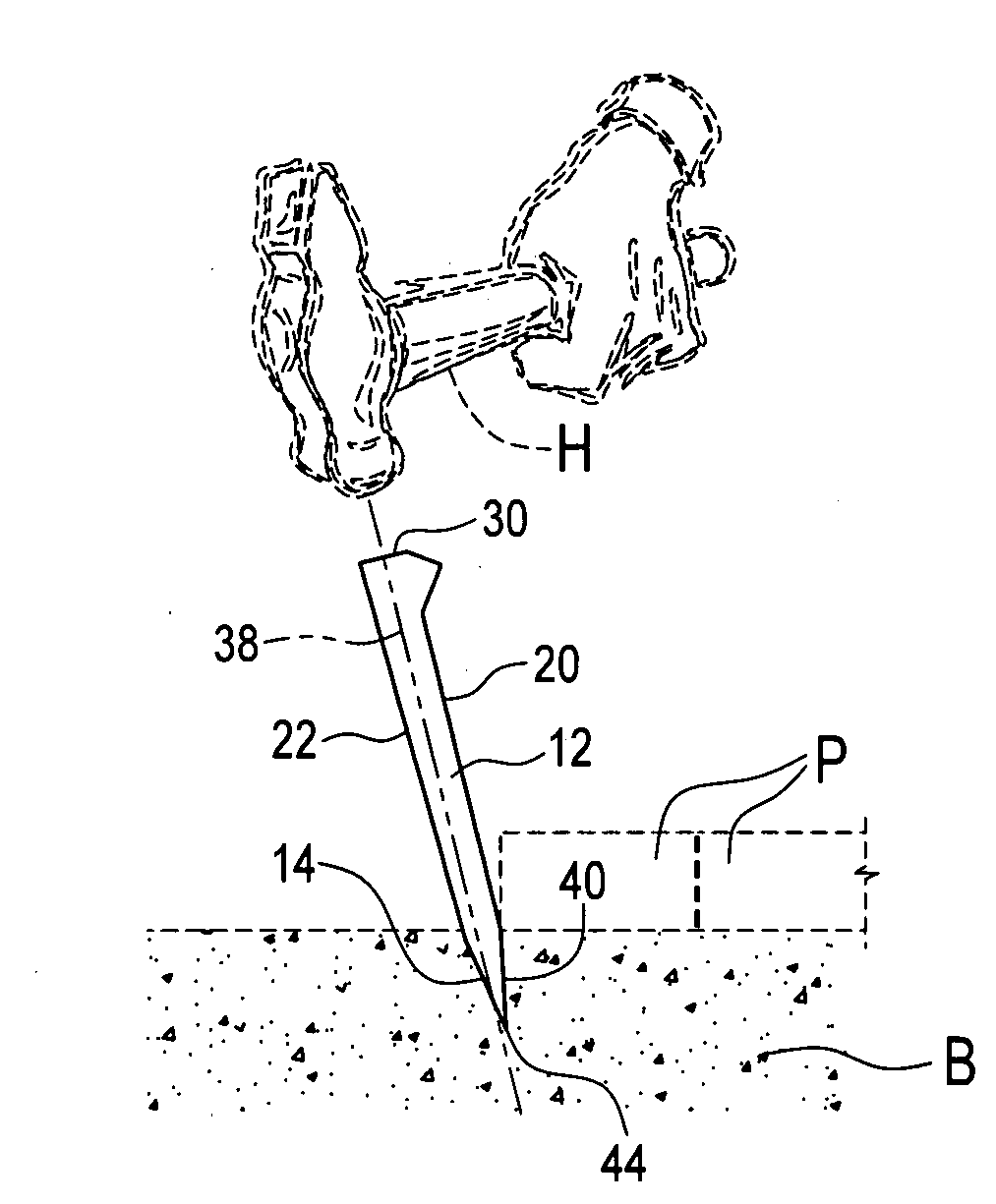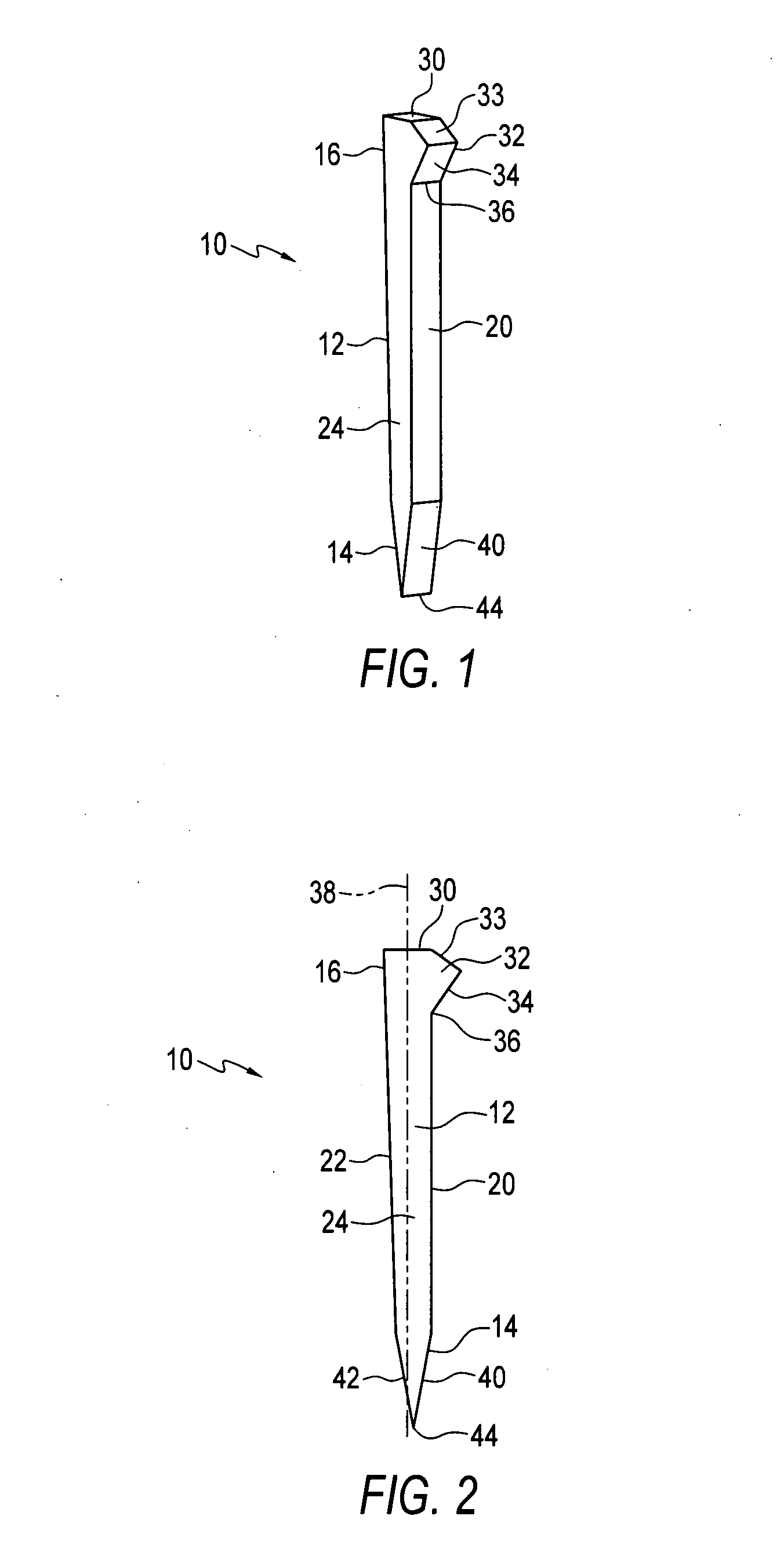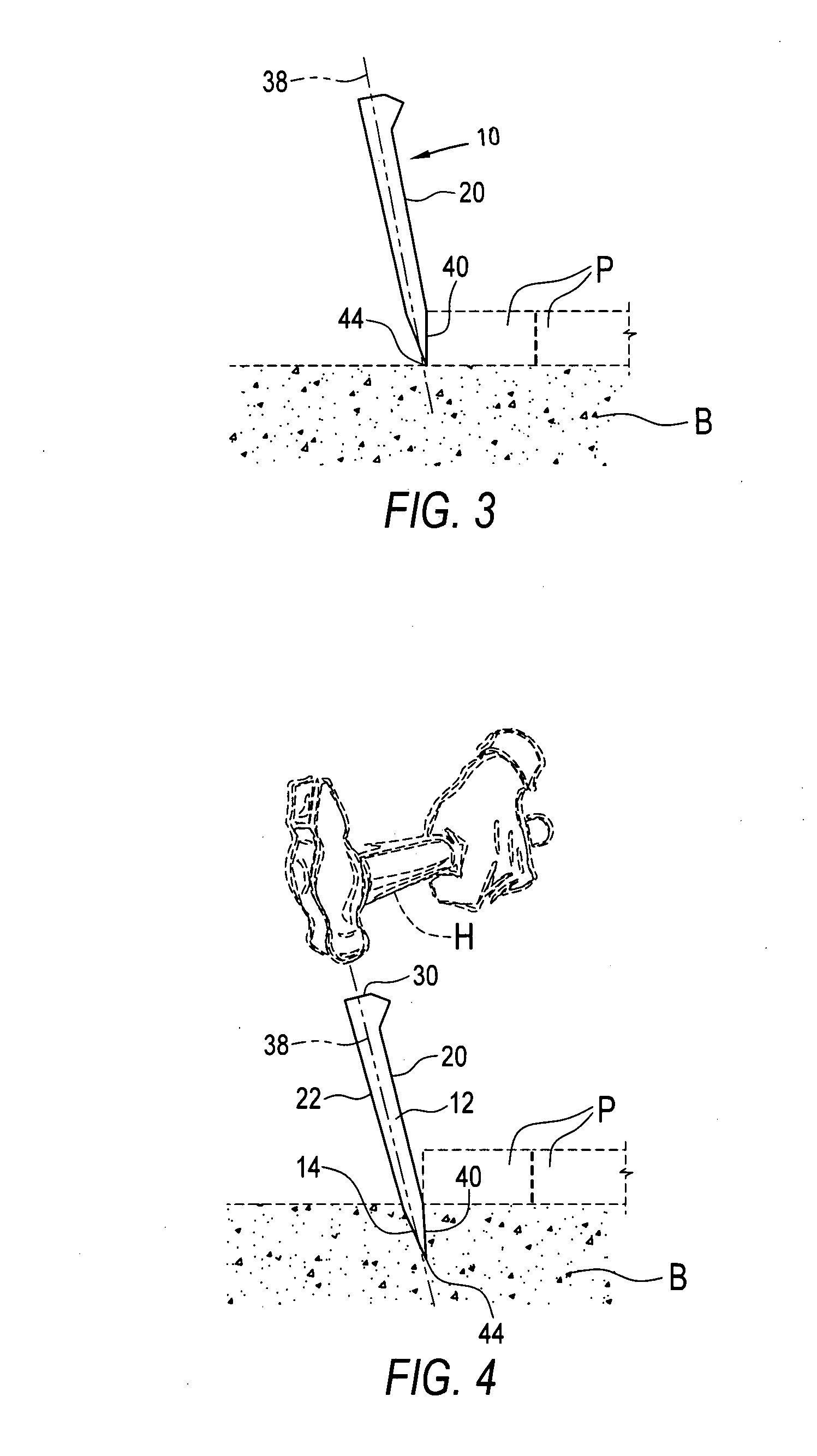Landscape retaining stake
a technology for retaining stakes and landscapes, applied in the field of stakes, can solve the problems of affecting the smooth and attractive surface originally intended, affecting the appearance, and affecting the appearance, so as to achieve the effect of preventing sinking and reducing the damage to the ston
- Summary
- Abstract
- Description
- Claims
- Application Information
AI Technical Summary
Benefits of technology
Problems solved by technology
Method used
Image
Examples
Embodiment Construction
[0013]The following is a description of an embodiment of the invention presently contemplated by the inventors to be the best mode of carrying out their invention.
[0014]Referring to the drawings, particularly FIGS. 1 and 2, the landscape retaining stake of the invention, indicated generally at 10, is comprised of an elongate body 12 having a tapered lower end 14 and an upper end or head 16. The cross-sectional shape of body 12 is shown as being essentially square, but could be other shapes such as H-shape. The lower tapered end is preferably chisel-shaped. The stake may be made of any rigid, sturdy and long lasting material, such as metal, plastic and preservative treated wood.
[0015]The length and cross-section of the body 12 may be sized according to the demands of the particular application for which the stake is intended. For conventional garden, footpath and patio applications, a recommended cross-section is in the order of ¾ inch by ¾ inch and a recommended length is about 8 to...
PUM
 Login to View More
Login to View More Abstract
Description
Claims
Application Information
 Login to View More
Login to View More - R&D
- Intellectual Property
- Life Sciences
- Materials
- Tech Scout
- Unparalleled Data Quality
- Higher Quality Content
- 60% Fewer Hallucinations
Browse by: Latest US Patents, China's latest patents, Technical Efficacy Thesaurus, Application Domain, Technology Topic, Popular Technical Reports.
© 2025 PatSnap. All rights reserved.Legal|Privacy policy|Modern Slavery Act Transparency Statement|Sitemap|About US| Contact US: help@patsnap.com



